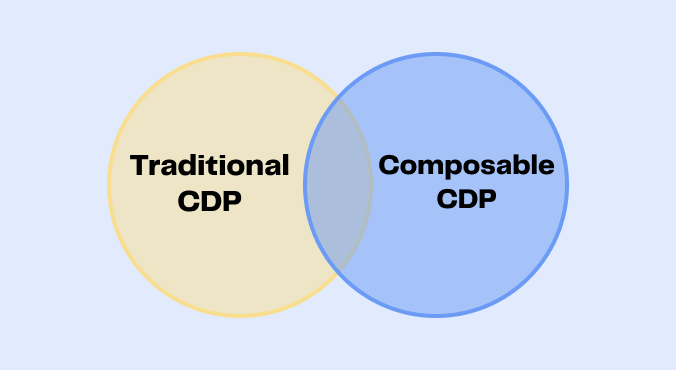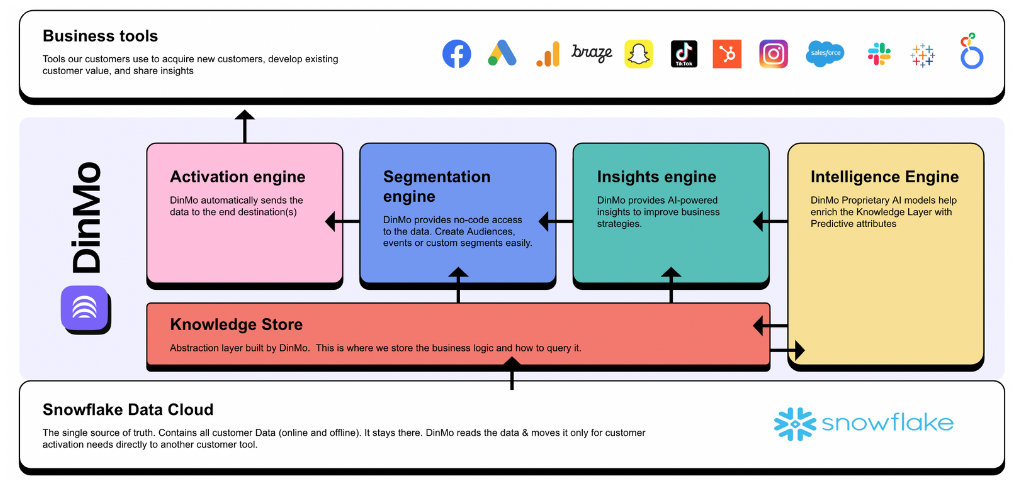
Becoming data-driven requires a modular approach
4min • Last updated on Nov 24, 2025

Oussama Ghanmi
Founder, CEO, and CPO
The Modern Data Stack represents a major evolution in the way companies manage and utilise their data. The trend is towards highly customisable data architectures, where each company can build its own "tailor-made" solution based on its specific needs, while maintaining flexibility and adaptability.
In that context, more and more companies are building their own Customer Data Platform (CDP), embracing a “Composable” approach.
💡 In this article, we'd like to show you why a Composable CDP enables you, first and foremost, to become truly data-driven, thanks to a modular approach to customer data management.
Traditional CDP vs. Composable CDP
Let's start with a few definitions to make sure we're aligned with what we're discussing.
1️⃣ Non-composable architecture is a monolithic system, an all-in-one solution that does everything. An example of a non-composable CDP is Salesforce Data Cloud, where the idea is that you get everything you could need in one product.
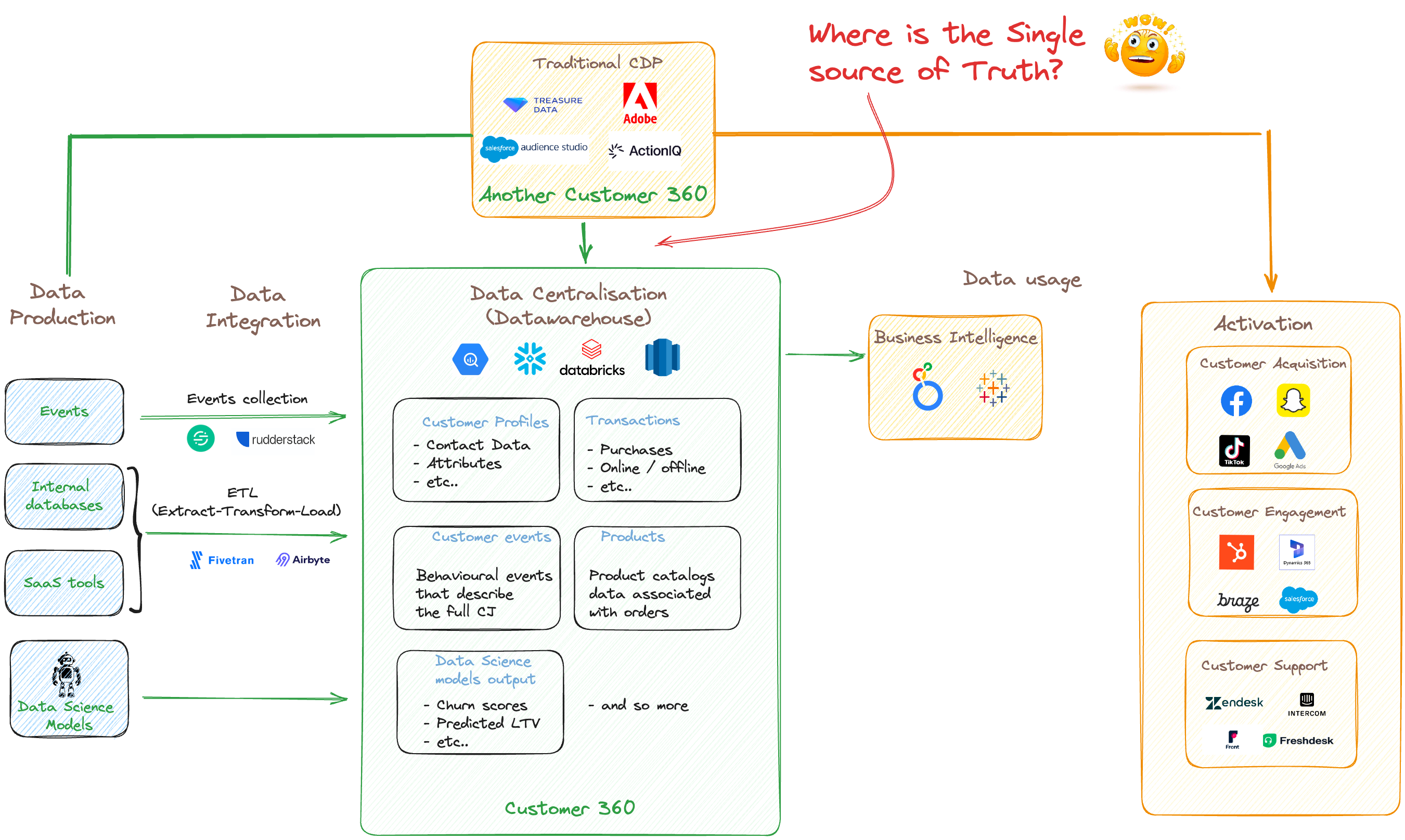
Traditional CDP is an all-in-one solution that centralises and activates customer data
2️⃣ Composable architecture is a set of many best-of-breed tools that form a global solution. Your ETL, data warehouse, data activator, BI solutions, etc. are all different tools.
In a Composable CDP, you combine an ETL like Fivetran, a data warehouse like Snowflake or BigQuery, and eg. a Reverse ETL/data activation tool like DinMo.
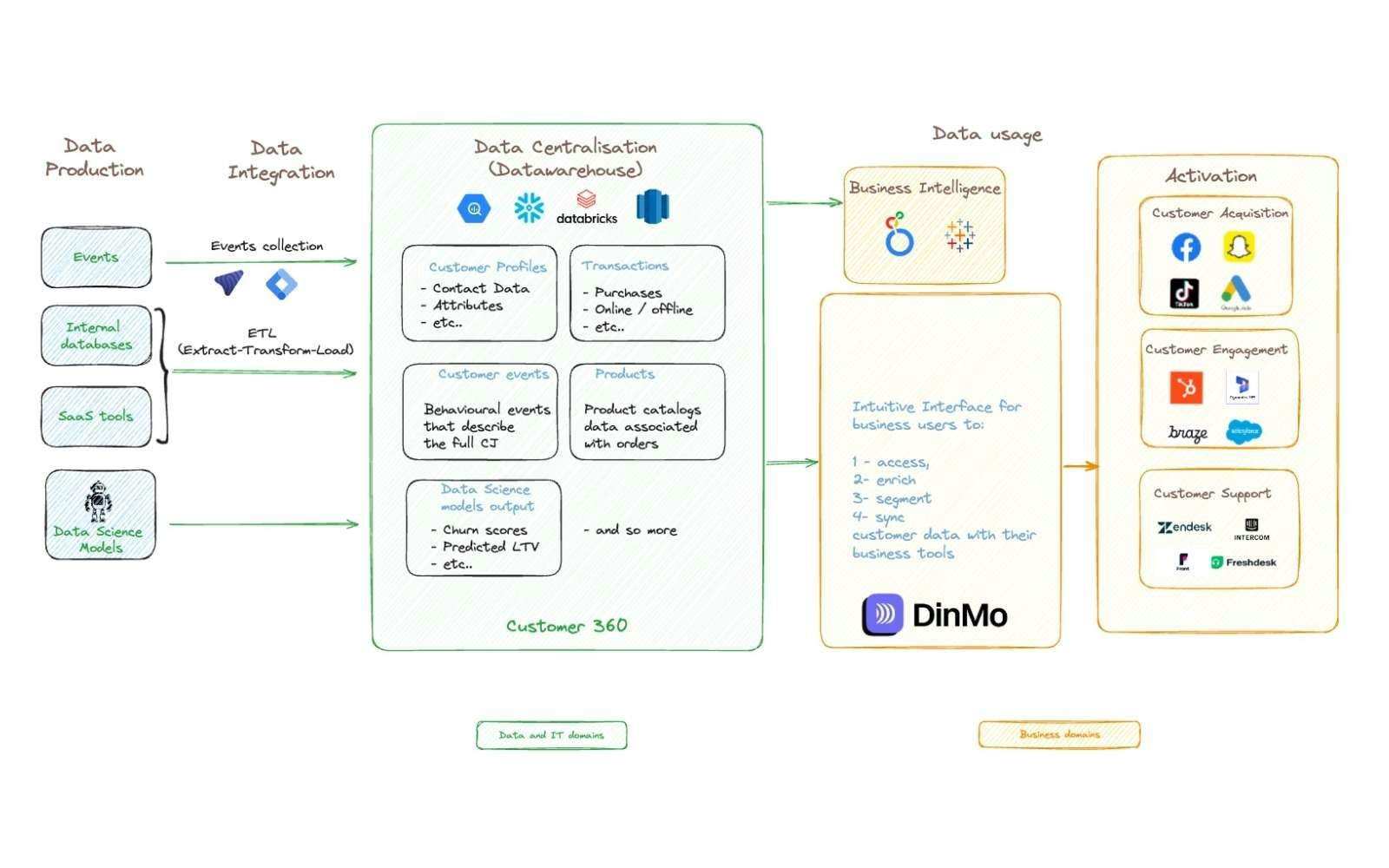
The Composable CDP plays the role of an activation layer, based on the existing data stack
Pros and Cons of a Traditional CDP
Traditional CDP and Composable CDP each have several advantages and disadvantages over the other. We summarise the main points of difference below, but if you'd like to find out more, don't hesitate to consult our article on the detailed advantages of Composable CDPs.
Benefits of using a traditional CDP
An all-in-one solution
You’ll have everything you need from one provider. You’ll deal with one website for documentation, one vendor for concerns, and one invoice to pay at the end of the month.
Simplified procurement process
Procurement is faster as you only need to choose a tool for all your use cases. At first glance, security can be perceived as simplified, as you only need to ensure one tool is compliant.
Downsides of using a traditional CPD
More expensive
Non-composable solutions are more expensive in two ways.
First, you pay for everything, whether you use it or not. When you use a composable solution, you only buy the tools you need.
Second, as a result of vendor lock-in, it’s so hard to change your solution that they can keep raising prices without losing customers.
No best-of-breed
No one tool is the best at everything. When you use a non-composable solution, you’re accepting that some parts of your stack aren�’t the best.Plus, most have poor integrations (and are not designed for it), so you can’t even get the benefit of incorporating other tools.
Data duplication
When you use a traditional CDP like Salesforce Data Cloud, it has its own data warehouse for your data to sit. But obviously, you’ll still need a company-wide data base for all your other use cases.
Now, your data will sit in two places — which is a nightmare for your IT and security teams.
If a customer wants to have their information deleted, you need to find all the systems where the data has been duplicated.
Slow to build new use cases
The process of integrating new data or new destinations, if possible, is slow. It can take months and months to modify non-composable solutions or to recreate the data model you need and so to launch a new use case (even if basic).
💡 This is where we see the biggest limitation of traditional CDPs. They don't show all their values quickly and don't allow for flexibility in the use cases implemented.
CDP Composable allows you to build your data-driven strategy in a modular way
First thing first: A CDP will not make you data-driven
Tl;dr: If you don’t invest in a data team to collect your data in one place and enable your teams to be data-driven, buying a CDP will not solve that for you.
Let's go detail this now!
Too many companies think that buying a CDP (Customer Data Platform) will make them data-driven.
But the truth is there are some important requirements that you need in place before you can get the value out of a CDP.
BI tools: If you’re not able to answer simple business questions about your customers (like which segment has the highest LTV), there’s no need to jump into a CDP.
A data warehouse: Unless you’re using a data warehouse and have all your customer data in one place, you won’t be able to benefit from a CDP. We often see companies which buy a CDP, pay for the license, and then spend the entire year building the data warehouse because they don’t have the data to plug into the CDP (wasting £100,000 on the CDP license without being able to use it).
At least 1 Data Analyst: While your data should be available across the company, you need at least one Data Analyst to guide your organisation’s thinking and understanding of the data before investing in a new tool.
And most importantly, a culture of data usage: Your team needs to be consuming data and thinking, regularly, about how to use it. They need to have a mature level of understanding of their audience that’s based on the data, and they need to continually use the data warehouse and BI tools to get more and more of an understanding.
What is the modular approach to CDP?
As explained above, many organisations need to solve use cases, but they often think too broadly about technologies. A common shortcut is to think that a CDP will be able to help process any customer-related operation. Most companies fail to recognise that they simply need a way to use their existing data in their business tools. Implementing the right solutions can streamline campaigns and enhance organisational efficiency. And these solutions are not necessarily traditional CDPs (again, for all the reasons mentioned above 😊).
At DinMo, we believe that the journey to becoming data-driven should be pragmatic and ROI-focused from the outset. This pragmatic focus on ROI may seem obvious, but is essential in a highly budget constrained Martech environment.
A modular approach allows customers to start small, typically through a POC. This gives companies a solid foundation to scale further as they deepen the use of their customer data (adding personas, features, and strategies over time).
Traditional CDPs still require several months of configuration before a basic use case can be implemented (e.g. excluding recent customers from acquisition campaigns). And yet, you already have everything you need in your company to implement this type of strategy and reap the benefits.
A modular approach means that any simple use case can be implemented in a matter of hours. There's plenty of time to implement complicated strategies later!
When the timing is right one, your Composable CDP can evolve in complexity and scope, seamlessly adding more data, destinations, functionalities, and user personas. This modular approach ensures that the tool grows in tandem with the company's maturity, continuously delivering value at each stage.
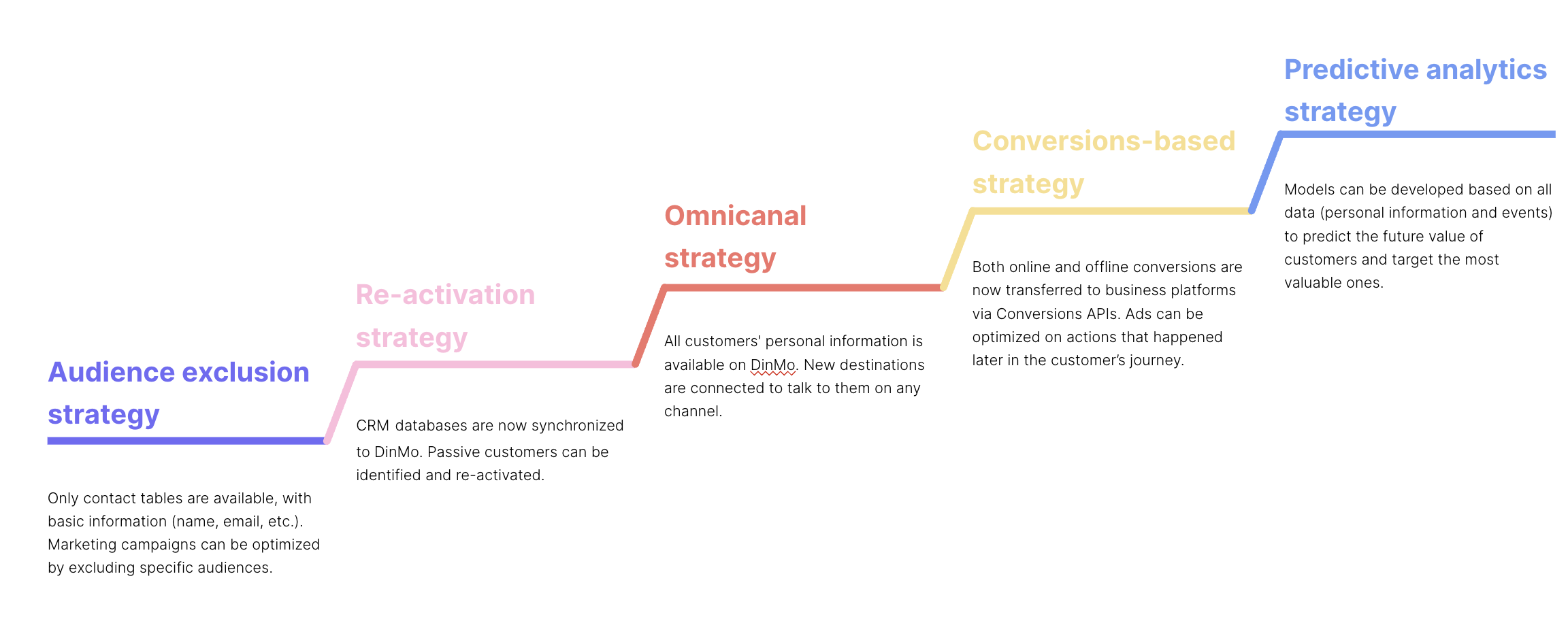
Composable CDP: A Modular Approach
A modular CDP with DinMo enables a step-by-step enhancement of functionalities to help marketing teams activate customer data effectively. If you want to focus on media strategies first, start by developing basic audience strategies, then gradually add conversion events.
As the system evolves, incorporate more sophisticated features and use cases, such as scoring models and, eventually, predictive analytics within your CRM. Finally, send 100% of customer data to your support tools. This phased approach ensures that each step is valuable and aligned with the business's current needs and capabilities.
Conclusion
DinMo makes the power of a CDP accessible to everyone: easy to implement, simple to use, and with the quickest ROI. We are deeply convinced that Composable CDP is the future of CDPs.
🚀 To understand more about how our Modular CDP aligns with your business and marketing needs and our vision of democratising access to CDP functionalities, we invite you to contact us to get a quick chat and a free demo of our tool!


















